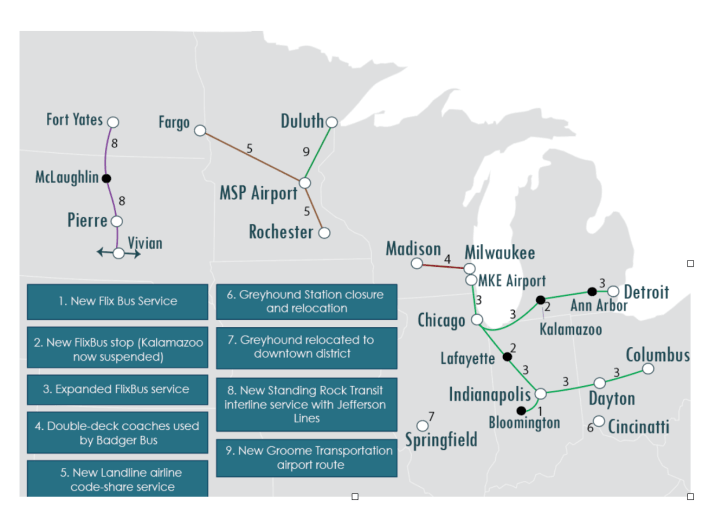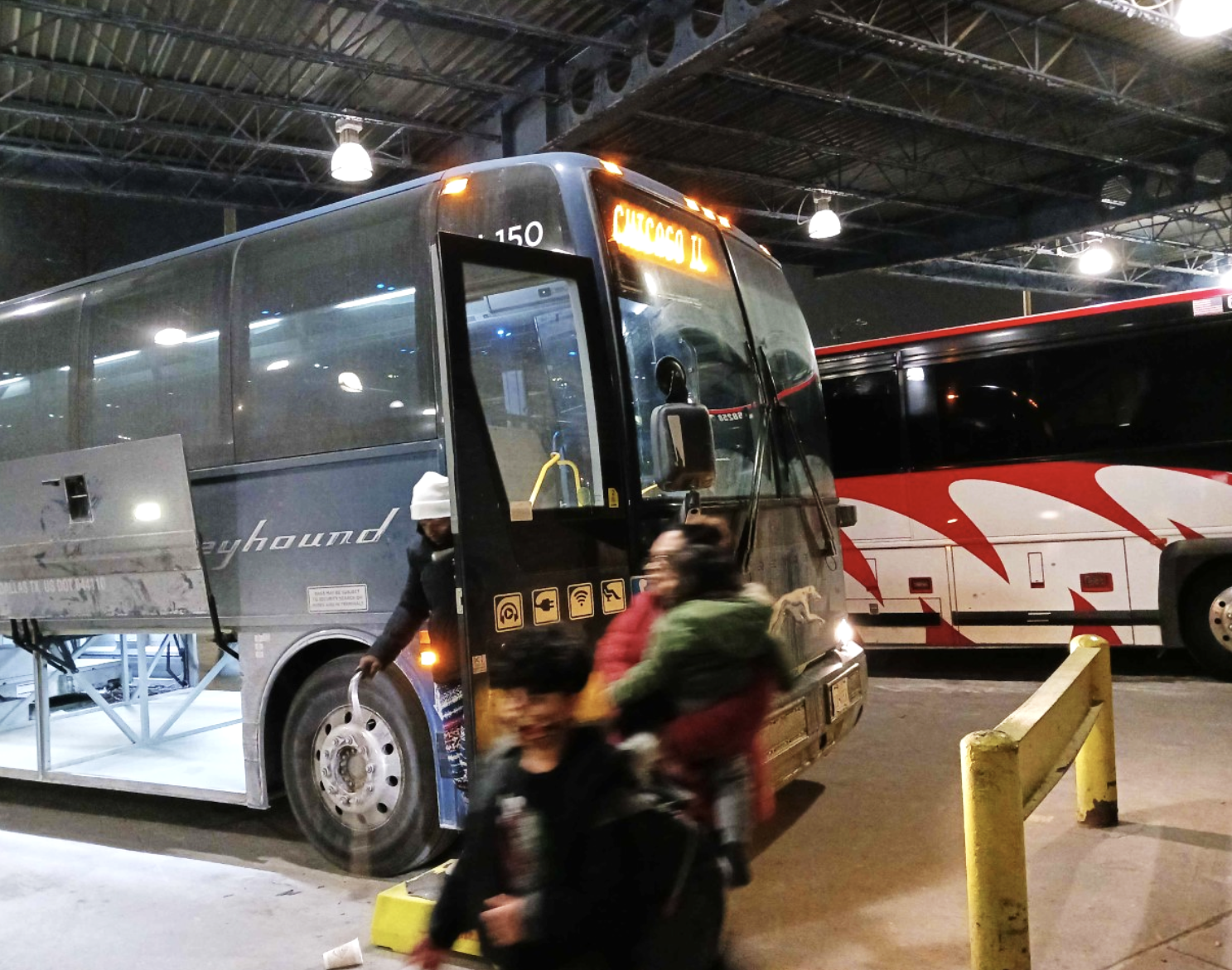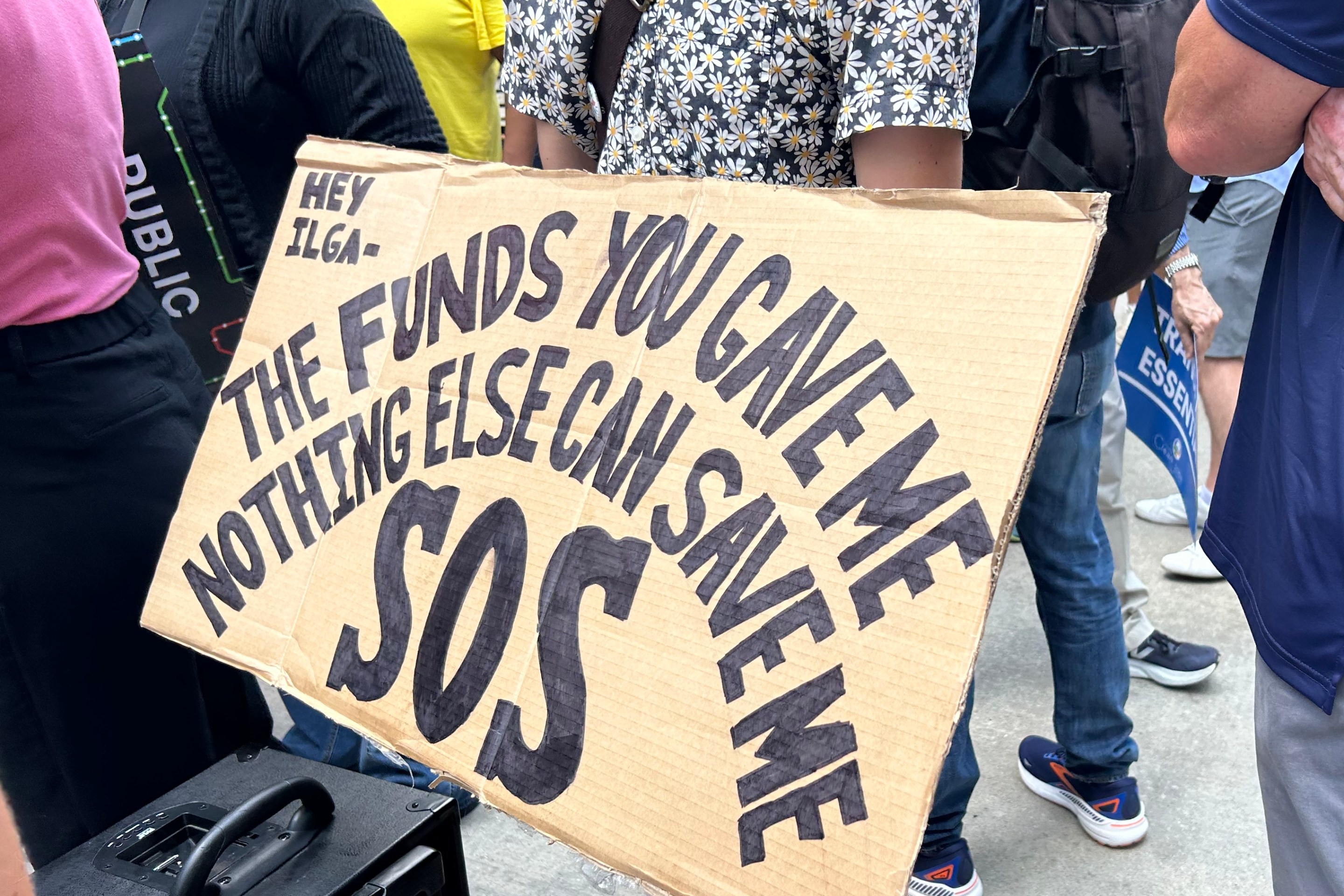Thousands of Chicagoans without private automobiles or who seek to avoid the cost and stress of driving routinely hop on intercity bus services such as Greyhound, Trailways, and FlixBus. These riders can expect many changes in the month ahead – some good and some bad. We describe the remarkable transformation that is underway in the Chaddick Institute at DePaul University study "New Directions: 2023 Outlook for the Intercity Bus Industry."
On the “plus” side, new conveniences are being rolled out by Greyhound. All customers will have assigned (reserved) seats, much like on airplanes, while also having the ability to pay extra to travel “neighbor free” (next to an empty seat) for trips starting February 22. Travelers will also be able to change their tickets with greater ease. Such conveniences, previously only available on FlixBus, Greyhound’s sister company, will help to enhance the legacy line’s image. German-based FlixMobiity, which owns FlixBus, captured headlines in late 2021 when it acquired Greyhound.
The transition could create stressful situations. “Training drivers to enforce the reserved seating policy will require persistence and diplomacy," notes Allison Woodward, a co-author of our report. "Even so, the changes should markedly improve the rider experience. Such changes are the latest moves by FlixBus to become more closely integrated with Greyhound. Flixbus, which launched the Chicago service in 2021, is a powerhouse in Europe and other international markets and seeks to expand rapidly on this continent. It does not own buses or terminals and uses a contracting model. Greyhound has a more traditional bus-ownership model.
“We expect Greyhound to maintain its brand identity and keep its familiar blue livery,” notes Woodward. Still, it seems probable that FlixBus and Greyhound services will be moved into closer proximity. Greyhound uses the Greyhound Bus Station at 630 W. Harrison St., near the CTA Blue Line’s Clinton stop, while FlixBus uses a curbside location next to Chicago Union Station. Another expected change – also a “plus” – is having more connections between Greyhound and FlixBus services sold as single “through” tickets. FlixBus might even join the interline bus network, allowing for advertised connections with Barons Bus, Burlington Trailways, Miller Transportation, and other local carriers on reservation platforms.
Even so, some existing connections could be lost if carriers opt-out, desiring to retain a degree of independence from the FlixBus/Greyhound juggernaut. More restrictive baggage allowances are afoot in the hope of speeding up stops. “No longer will travelers be able to bring a minivan full of suitcases or duffel bags for their trip,” notes Abby Mader, another co-author.
New Routes give Bus Travel a Boost
Fortunately for those depending on bus travel, new options have recently emerged to fill a void left by Megabus’s withdrawal from Chicago. Last year, Megabus eliminated the last of its local routes by cutting its Windy City – Minneapolis/St. Paul route. FlixBus now serves that route and Chicago - Detroit, albeit only five or six days a week. FlixBus’s longest route, its 450-plus-mile Columbus to Chicago to Milwaukee service, is novel for being a “through” service that allows passengers to avoid transfers in our city, a rarity by bus or train. Short-hop Chicago to Milwaukee passengers will usually find bus fares below those of Amtrak, although train service is faster and remains much more frequent, which appears to have slowed the recovery of bus service on the route. FlixBus also has a new Chicago to Bloomington, IN service.

Despite FlixBus’s expansion, the options for bus travelers on several important routes from Chicago remain modest compared to comparably sized ones in other regions. To Cleveland, Louisville, St. Louis, and Toledo – once Megabus strongholds – direct express bus service is limited to Greyhound. On trips to Cincinnati (my birthplace), neither express bus service nor daytime train service is available. There is only Amtrak and Greyhound service to St. Louis, with the latter having reduced direct service to two daily trips, one of which arrives at St. Louis well after midnight. Conversely, travelers to Indianapolis can choose from FlixBus, Greyhound, OurBus, and Miller Transportation (Hoosier Ride). OurBus launched its service following the 2019 demise of Amtrak’s Hoosier State. Service from Chicago to Fort Wayne is similarly impressive, having grown to four buses each way daily, although the route lacks a train. (Years ago, I was a regular Amtrak’s Broadway Limited rider from Fort Wayne, but that train is long gone).
Possible Loss of the Chicago Greyhound Station
Now for the bad news: A real and disconcerting possibility exists that bus lines will be evicted over the next year or so from the Chicago Greyhound Station. Most privately run Greyhound stations were retained by FirstGroup, Greyhound’s previous owner, after the FlixMobility purchase. Most stations were then sold to real-estate developers, which has caused the timetable for the redevelopment of the properties for other uses to accelerate significantly.
Last year, Greyhound relocated—in most cases involuntarily--from its longstanding stations in Charlottesville, VA; Cincinnati, OH; Erie, PA; Jackson, MS; Knoxville, TN, Los Angeles, CA; and North Little Rock, AR. In Charlottesville, Jackson, and Knoxville, the relocations sparked a public outcry due to the loss of comfortable indoor waiting rooms and the unappealing nature of the new locations. Recently, there have been reports that Greyhound stations in Cleveland, OH; Houston, TX; Kansas City, MO; Louisville, KY; and Nashville, TN, are at risk.
Could Chicago be next? Quite possibly, so city officials need to be ready. There are no options readily apparent for another downtown station with an indoor waiting room and other amenities. The prospect of hundreds of passengers waiting outside for their bus connections at a curb in extreme weather must be avoided. If the station is shuttered, swift leadership will be needed to avoid disadvantaged groups, including immigrants, quite literally being left out in the cold.
Joe Schwieterman, PH.D. is a professor and director of the Chaddick Institute for Metropolitan Development at DePaul. He is having a free webinar on his new outlook for the industry report at 2 pm on February 23.





